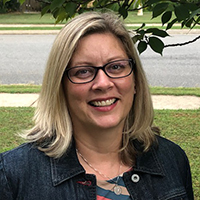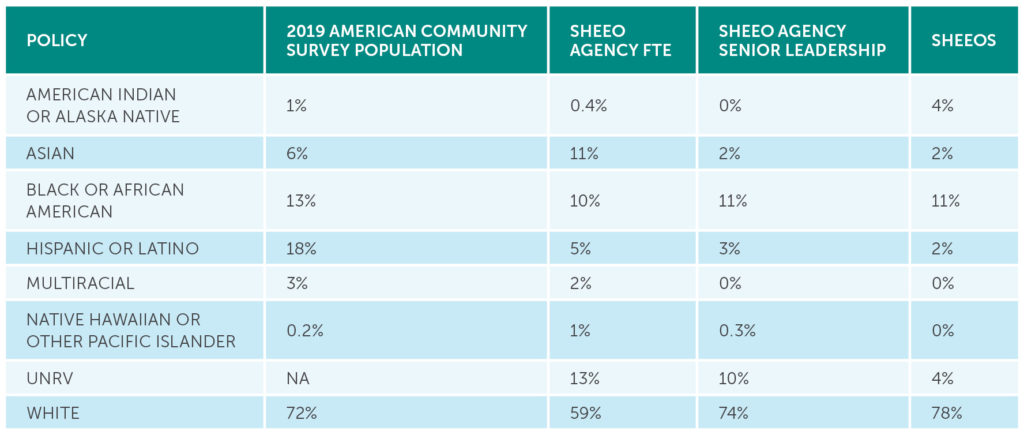Most states have not recovered from prior recessionary cuts in state funding and now face declines in their other revenue sources. Public institutions may be in a more precarious financial situation than at any other time in recent history. Amid this uncertainty, the SHEF report offers a comprehensive look at where states stood as they weathered the COVID-19 pandemic and economic recession.
BOULDER, Colorado —
In fiscal year 2020, a 2.9% increase in per-student education appropriations marked the likely end of an eight-year recovery in higher education funding. The State Higher Education Executive Officer Association’s (SHEEO) early estimates show that in 2021, inflation-adjusted state appropriations for higher education declined in most states. If past recessions are any indication, higher education likely faces several years of increasingly steep cuts to state funding. This means that public systems of higher education would enter a period of cuts from an already historically low base when compared to previous pre-recession figures.
In addition, institutions face unique financial pressures moving forward. With declining revenue from both states and students and after a year of increased costs due to the pandemic and the switch to online learning, state support for higher education is crucial for the continued success of our public institutions. The 2020 SHEF report provides a clear baseline for understanding state and local funding for public institutions prior to the impacts of the COVID-19 pandemic and subsequent 2020 economic recession.
We find that states varied widely in their recovery from the last two recessions. Nationally, education appropriations remained 6.0% and 14.6% below 2008 and 2001 levels, respectively. Appropriations have fully recovered to at least 2008 levels in 18 states, a large improvement from the previous year. Still, funding has not recovered from the last recession in almost two-thirds of the states, and 12 states were at least 20% below 2008 levels.
For the first time, the 2020 SHEF report includes detailed information on state appropriations to institutions, student financial aid, tuition revenue, and student enrollment at two-year and four-year public colleges. These new data bring to light clear disparities in funding and total revenues across sectors.
Key findings from the 2020 SHEF report include:
- Enrollment declined for the ninth straight year. Following a 0.6% decline over 2019, there were 10.9 million full-time equivalent (FTE) enrolled students in 2020. The enrollment decline was concentrated at two-year public institutions, which reported a 1.9% decline, while four-year public institutions reported a 0.2% increase.
- Two-year public institutions received less funding from state governments. Two-year colleges received $4,969 per FTE in state general operating appropriations, compared to $7,352 at four-year institutions. Local appropriations largely made up for this gap, and total education appropriations at two- and four-year institutions were $8,214 and $8,389, respectively.
- Financial aid continued to rise at a faster rate than institutional funding. Financial aid has increased steadily despite economic recessions that negatively impacted the rest of education appropriations. State public financial aid per FTE increased 7.0% in 2020 and reached an all-time high of $830 per FTE. These funds made up 9.6% of all education appropriations, the largest proportion ever.
- Net tuition revenue decreased for the second straight year. Public institutions averaged $6,726 in net tuition revenue from in-state and out-of-state students in 2020, down 1.0% from the previous year. The decline in net tuition revenue was partly due to increases in state financial aid, but even when including aid, tuition revenue per FTE did not keep up with inflation in either of the last two years.
- Total revenue continued to rise, but not for all states and institutions. Total education revenue increased 1.2% in 2020, reaching an all-time high of $15,276 per FTE. However, total revenue was not at a record high in more than half of the states, and varied substantially by institution type. Many institutions have not been able to increase tuition revenue to offset declines in state funding, and four-year institutions had 1.64 times the total revenue of two-year institutions.
- Students financed the majority of public institution revenues at four-year institutions. There has been a substantial shift of responsibility for financing public higher education toward net tuition revenue, particularly in the four-year sector. At two-year institutions, the average student share in 2020 was less than a quarter (24.2%). At four-year institutions, the average student
share was over half (53.2%).
Taken together, these findings paint a concerning picture for higher education finance as the impacts of the 2020 recession continue to affect higher education. While recent state investments in higher education are to be celebrated, per-student funding has never been so low at the start of an economic recession, which typically impacts higher education budgets for years.
SHEEO President Robert E. Anderson drafted an editorial statement with additional comments regarding the future of state funding for higher education and shared, “Public systems of higher education face unprecedented revenue challenges given the decline in student enrollment. In the past, enrollments in higher education have been countercyclical, rising during economic downturns. The COVID-19 recession proved to be an exception to that rule. This will lead to strain in institutional budgets, particularly at public two-year institutions and at institutions most reliant on tuition revenue. Continued state investment and federal assistance is key to ensuring that institutions are able to serve our students.”
“As the country emerges from a volatile time and states reassess their budgets and priorities,
SHEF provides an important measure of progress made and critical work to be accomplished. SHEF and its new sector-level data give higher education leaders additional tools to fully analyze trends and better advocate for investment in talent development for our students,” said SHEEO Executive Committee Chair Kim Hunter Reed. “Education is an investment that pays. It transforms lives, strengthens communities and drives economic recovery.”
While these findings are crucial to understanding the broad strokes of national finance trends in higher education, it’s important to note that national trends mask considerable variation across the states. “States vary widely in their contributions to public higher education, and we want to acknowledge the progress made in many states to restore prior funding cuts. Eighteen states have restored funding to at least 2008 levels. This is twice the number of states that were able to do so last year. At the same time, many other states have had no recovery in state funding for higher education whatsoever, and the national narrative of continued increases does not represent their reality,” said Sophia Laderman, senior policy analyst at SHEEO and primary author of the report. “Even more, there are inequalities in funding across institution types. Our new sector-level data bring some of these to light, but even within a sector, it’s important to focus on the disparate impact of state funding cuts to institutions that are heavily reliant on state funding.”
The full SHEF report paints a more complete picture of differences in public higher education finance across states.
Explore the SHEF website to read the full report and customize the interactive data visualizations. The SHEF website also includes individual state profiles, additional reports on state effort and capacity to fund higher education and early estimates of 2021 state support, and issue briefs that focus on the use of federal stimulus funding for higher education and changes in state funding for private institutions over time.
###
About the State Higher Education Executive Officers Association (SHEEO)
The State Higher Education Executive Officers Association (SHEEO) serves the chief executives of statewide governing, policy, and coordinating boards of postsecondary education and their staffs. Founded in 1954, SHEEO promotes an environment that values higher education and its role in ensuring the equitable education of all Americans, regardless of race/ethnicity, gender, or socioeconomic factors. Together with its members, SHEEO aims to achieve this vision by equipping state higher education executive officers and their staffs with the tools to effectively advance the value of higher education, promoting public policies and academic practices that enable all Americans to achieve success in the 21st century, and serving as an advocate for state higher education leadership.





